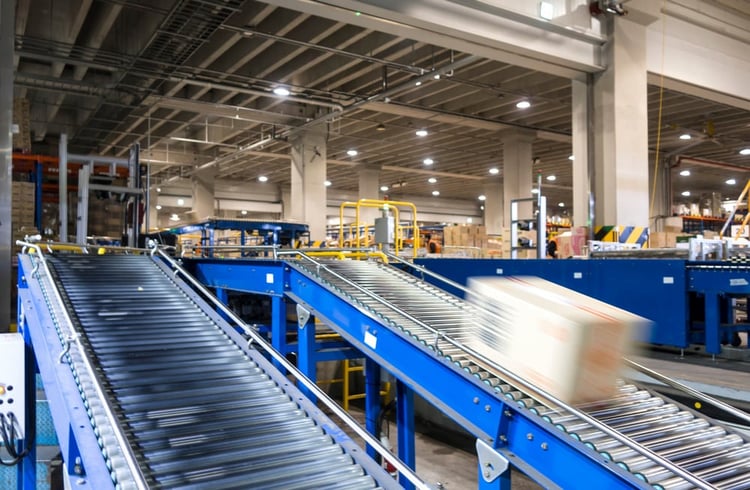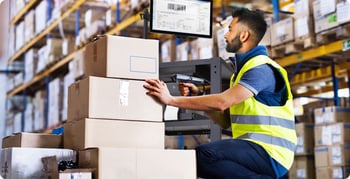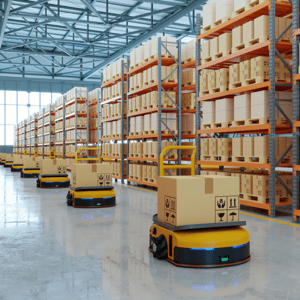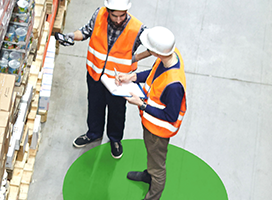
Technology has become an influential part of our everyday lives. When you think about it, living without a smartphone, connected devices, and various gadgets would be challenging on a personal level. The same sentiment holds true in the warehousing and logistics industry.
While a largely traditional industry, warehouses have been under tremendous pressure in recent years to adapt to fast-changing market conditions. More people than ever are shopping online, and the pandemic revealed many supply chain weaknesses that technology could address. Here’s why technology has become so important in the warehouse and a list of technology solutions that can help your business improve efficiency.
Why is Technology Important for Warehouses?
eCommerce sales have exploded over the past several years, partly due to the pandemic. As more consumers have turned to online sources for their purchases, this places an unprecedented strain on warehouses and logistics providers.
At the same time, the pandemic was a catalyst for a host of supply chain challenges that seemed to be lurking under the surface. Examples include material shortages, congestion at critical ports, lack of supply chain visibility, worker shortages, and demand forecasting complexity. Fortunately, various technology solutions can help address these and improve efficiency in the warehouse.
Technologies You Can Use to Improve Warehouse Efficiency
Efficiency is crucial to a healthy warehouse operation. Whether you need smoother warehouse floor operations or better demand flexibility, these technologies can improve efficiency to grow your business.
Warehouse Management System (WMS)
Any warehouse technology you implement should have a robust warehouse management system as its foundation. This is a robust system that can manage and drive every aspect of your warehouse’s operation, making them more efficient and productive. Some key features of these systems include:
- Cloud-based — While you could have a connected WMS, why would you want to? A cloud-based system means you won’t have a significant infrastructure investment upfront. And this type of system will be available to your employees anytime and anywhere.
- Simple Integration — Find a WMS that is simple to integrate with your existing systems. This should be possible using APIs.
- Process and Workflow Oriented — Your WMS should give you valuable insights into your business’s processes so that you can optimize them to overcome challenges, take advantage of opportunities, and achieve the greatest possible efficiencies.
Mobile Technology
In most warehouses, the average employee makes dozens of trips daily back and forth to a centralized area to print picking instructions or packing labels or to enter data into a computer. This is cumbersome work that can lead to human error and injuries, thanks to fatigue.
Mobile warehouse technology gives workers instant access to those same systems from any place in the warehouse. Some mobile warehouse technologies that increase efficiency include:
 Mobile Computers — Getting access to computing power to keep warehouse operations moving no longer requires that workers travel back and forth to a central location. Warehouses can now get the same power, reliability, and useful applications using mobile workstations, which are designed with long-lasting batteries and the ability to move where workers need them the most.
Mobile Computers — Getting access to computing power to keep warehouse operations moving no longer requires that workers travel back and forth to a central location. Warehouses can now get the same power, reliability, and useful applications using mobile workstations, which are designed with long-lasting batteries and the ability to move where workers need them the most. - Mobile Printers — Mobile printers can also be installed on mobile workstations so employees can print labels to reduce walking time and improve picking and packing efficiency.
- Wearable Devices — Instead of asking workers to juggle multiple items at once, which can lead to errors and inefficiency, many warehouses are adopting wearable devices. For example, a picker can get voice instructions through a wireless headset that directs them to the product’s location.
- Barcode & RFID Scanners — Barcode scanners are usually handheld devices used to record the movements of items. But RFID scanners can be fixed in place throughout the warehouse to record the movement of products instantly without having workers scan each item individually.
Connected Devices
The Internet of Things (IoT) is a broad concept that refers to using connected devices to achieve greater convenience and efficiency. We use IoT at home with smart thermostats and appliances. So why not leverage the same technology in the warehouse?
IoT-enable devices can help your warehouse avoid errors and reduce accidents in a variety of ways:
- Warehouse sensors can monitor temperature, humidity, and other conditions.
- Data collected from products, vehicles, and other shipping conveyances can reduce spoilage, diversion, theft, and counterfeiting.
- IoT data can help improve processes to create a better employee and customer experience.
Automation Technology
If you want to improve efficiency, boost productivity, and address your ongoing labor issues, automation and robotics is the ideal solution. And the possibilities are nearly endless. Sure, you can spend a ton to create a lights-out warehouse. But this isn’t necessary. You can get your work done faster, smarter, and cheaper by employing a variety of automation solutions.
 Automated PIcking Tools — Order picking is one of the most labor-intensive areas of order fulfillment. Using RFID tags, a variety of different tools can be used, such as pick-to-light, robotic order picking, and voice-automated order picking.
Automated PIcking Tools — Order picking is one of the most labor-intensive areas of order fulfillment. Using RFID tags, a variety of different tools can be used, such as pick-to-light, robotic order picking, and voice-automated order picking. - Automatic Guided Vehicles (AGVs) — This technology can be used to automate the process of moving items of every shape and size around your warehouse. In fact, you could automate the entire receiving process using AGVs.
- Automated Storage and Retrieval Systems (AS/RS) — Automated storage and retrieval systems have improved so much over the years that they can now improve accuracy and reduce costs in multiple areas of your business.
- Collaborative Robots — Instead of replacing human workers, collaborative robots work alongside your employees to take over repetitive, dangerous, and mundane tasks.
Warehouse technologies can directly impact warehouse efficiency, which is a critical strategic goal for just about every business in this industry. When your warehouse’s operations run efficiently, the business will be more productive, have fewer errors, and deliver a better customer experience.

